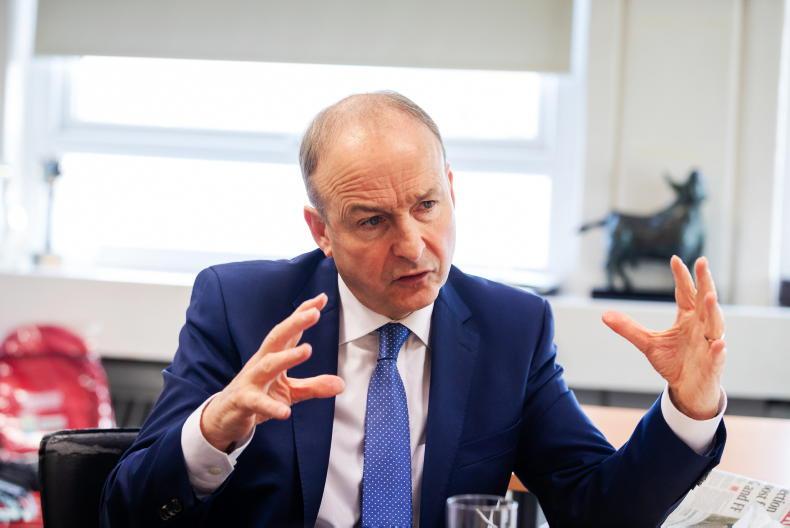As counting in the 2024 general election draws to a close, the shape of the next Dáil has become clearer. Following a marathon day of counting on Sunday, only a dozen of the 174 seats in what will be the largest ever Dáil remain to be filled.
The big news from the small hours was the re-election of outgoing Minister for Agriculture Charlie McConalogue, who won the last seat in Donegal following a strong transfer from the two eliminated Fine Gael candidates. Also in the northwest, Marian Harkin held on to her seat, defeating Independent Ireland's Michael Clarke in a tight battle for the final seat.
Let's have a quick recap of the parties on Monday morning.
Fianna Fáil will be the largest party, and by a clear margin. It has already secured 43 seats, and seems set for further pick-ups in Cavan-Monaghan (two seats), Louth, where Erin McGreehan, sister of IFA's Matthew will be their new TD, Kildare north and Tipperary north. That would leave them with a total of 48 seats.
Sinn Féin has 36 seats, and seems set for further gains in Cavan-Monaghan (two), and Kildare north, giving the party a total of 39 seats.
Fine Gael will be one seat behind on 38 seats as it has 36 already, and will add further seats in Louth and Kildare north.
The Green Party has had almost a total wipeout, losing 11 seats. Roderick O'Gorman, the party leader, will be its one and only TD in the next Dáil.
The Social Democrats and Labour Party have picked up many of those seats, and will both have 11 seats next time out, with Labour set for two more seats in Louth and Tipperary north.
Independent Ireland did pick up one extra seat, with party chair Ken O'Flynn elected in Cork north central. However, with only four TDs, it is less attractive as government partners than it might have been with six or seven TDs.
Aontú has doubled its Dáil representation, adding a seat in Galway west to give the party two TDs.
People Before Profit/Solidarity seems to be losing Mick Barry in Cork north, although a recount is likely. That would leave the party with only three seats.
Independent candidates have not fared as well as predicted, and seem to be returning in lower numbers, with the final tally likely to be 16 seats.
That leaves one final seat, which was gained by Charles Ward of the 100%Redress party in Donegal.
Who will be the government partners?
As the largest party, it falls to Fianna Fáil to lead off government formation talks once the dust has settled and everyone has got a good night's sleep.
It has made no secret of its preference to once again enter into an administration alongside Fine Gael. Indeed, one of the notable, and decisive, elements of the election was the strong transfer of votes between the two historical electoral rivals.
The maths are straightforward. Combined, Fianna Fáil and Fine Gael are set to have 86 seats, which is just shy of half the 176 seats in the next Dáil. They could in theory form an administration with just one independent's support, if they put an opposition TD into the Ceann Comhairle's chair.
However, such a government would be extremely vulnerable. All three main parties lost TDs in the lifetime of the last Dáil, whether through suspension, expulsion, resignation, or retirement. So the likelihood is that a decent working majority will be the goal.
There will be discussions around a Sinn Féin-led left-leaning coalition. The most TDs such a grouping could expect to gain would be around 72 TDs, so the only way Sinn Féin could enter government would be in tandem with Fianna Fáil. That seems very unlikely.
There are two likely options. The first is Fianna Fáil, Fine Gael and centre/right independents and/or Independent Ireland. Aontú has indicated it will not serve in a government involving Fine Gael, so the party is not in the reckoning.
The second is Fianna Fáil, Fine Gael, and either Labour or the Social Democrats. Such a government would have a "rainbow" look about it, and would have a significant majority. However, the first option is more likely to emerge as the preferred option. It could even mirror the 2016-2020 administration, where Fine Gael and some independents, including Seán Canney and Kevin "Boxer" Moran, were supported from outside by Fianna Fáil, in a "confidence and supply" arrangement.
Fianna Fáil will most certainly be on the inside this time, with Micheál Martin sure to be Taoiseach, having overseen the final step in the parties rehabilitation after the meltdown of 2011; its re-emergence as a significant political presence in Dublin city. But who will supply the confidence in the coalition he leads? Only time will tell.






 This is a subscriber-only article
This is a subscriber-only article










SHARING OPTIONS: